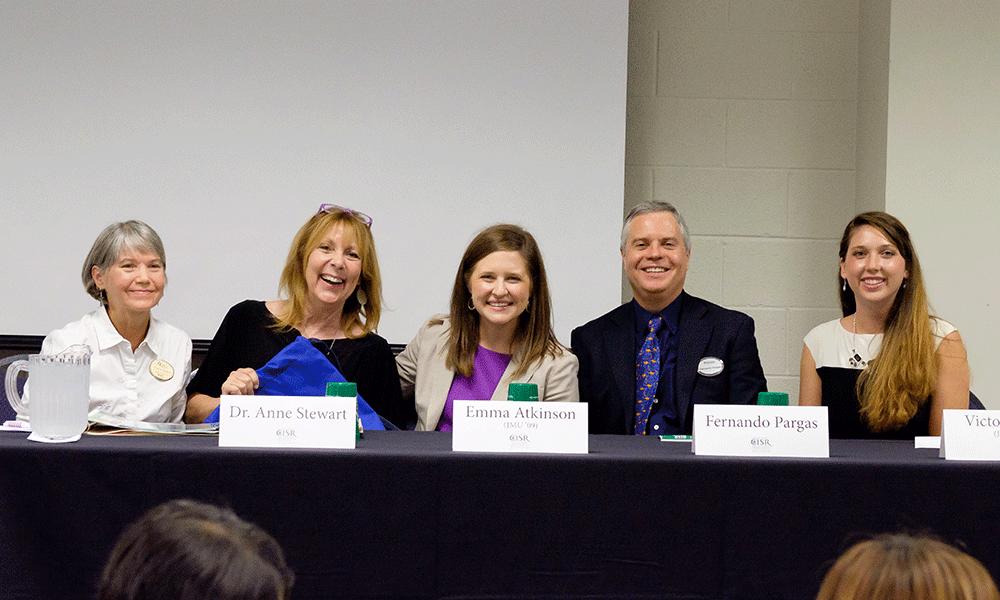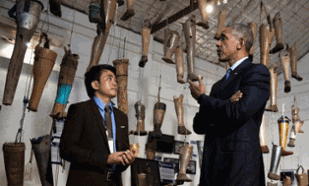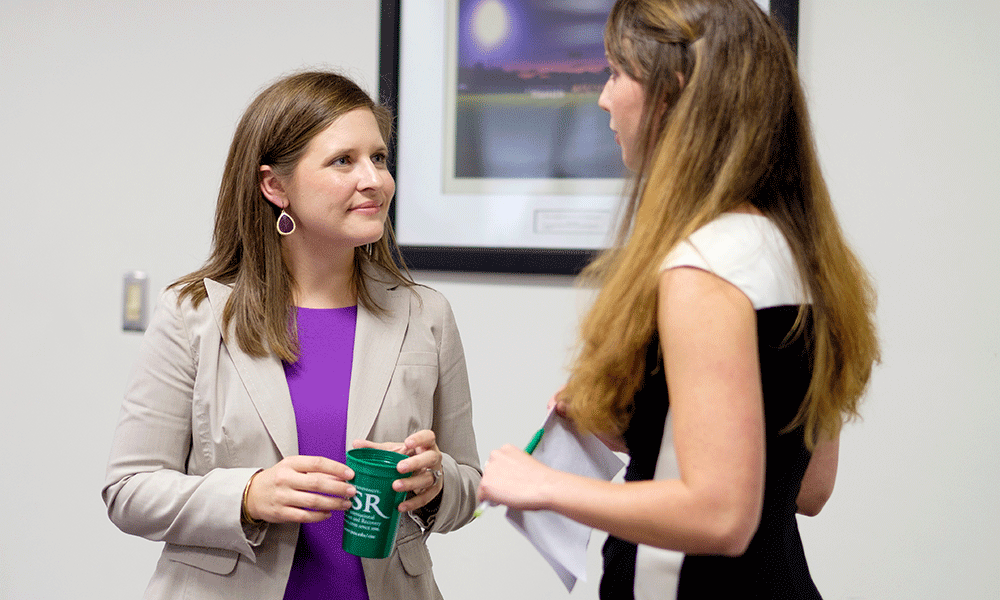Matters of state
Emma Atkinson's Madison Experience took her to the State Department
Nation and World
SUMMARY: In her work for the State Department, Emma Atkinson ('09) has managed conventional weapons destruction programs around the globe.
Read more about the Center for International Stabilization and Recovery's 20th anniversary in the Winter 2017 Madison
Emma Atkinson (’09) worked with the Center for International Stabilization and Recovery at James Madison University during her undergraduate career. Today she is the program manager for conventional weapons destruction in East Asia and the Pacific, under the State Department's Office of Weapons Removal and Abatement. She recently returned to campus to help celebrate CISR's 20th anniversary. She talked to Madison magazine about her career and her participation in international efforts to combat the effects of explosive remnants of war.
Madison: What is your role at the State Department?
Atkinson: I am the program manager for conventional weapons destruction in East Asia and the Pacific, under the State Department's Office of Weapons Removal and Abatement. In this role, I manage over $40 million in foreign assistance funds for conventional weapons destruction programs in Vietnam, Cambodia, Laos, Burma and the Pacific Islands. Prior to assuming this role in September 2012, I managed similar programs in Africa, and South and Central Asia. I joined the State Department in July 2009 as the Frasure-Kruzel-Drew Humanitarian Demining Fellow. https://www.jmu.edu/cisr/other/fellowship.shtml [A two-year career development opportunity sponsored by the U.S. Department of State’s Office of Weapons Removal and Abatement and administered by the Center for International Stabilization and Recovery. The selected fellow serves in in the State Department’s Washington, D.C. office and gains valuable experience in managing foreign security and humanitarian assistance-related programs.] I’ve managed conventional weapons destruction programs in Afghanistan, Tajikistan, Libya, Somalia, South Sudan and Sri Lanka.

Madison: You recently traveled with President Obama on his trip to Laos and Southeast Asia. Can you tell us about that experience?
Atkinson: In September, President Obama became the first sitting president to visit Laos. During the visit, President Obama announced new U.S. assistance to help Laos achieve its development goals. For example, the United States will invest $90 million over the next three years to conduct the first-ever comprehensive national survey of unexploded ordnance in Laos and to fund ongoing clearance and victim assistance operations. This survey is a critical component of our efforts because it will help focus resources on areas offering the greatest impact and with the most potential for economic development. Following this announcement, Laotian President Bounnhang Vorachith welcomed the U.S. government’s continued commitment. This funding represents a decisive step forward in clearing bombs, supporting survivors and advancing a better future for the people of Laos.
|
I loved that [at JMU] students had access to their professors and were given meaningful opportunities to pursue their interests and passions both in the classroom and through student organizations. |
Madison: What is the state of weapons removal in that region and what does the future hold?
Atkinson: We are at a really exciting time in the humanitarian mine action community in Southeast Asia. The United States has been supporting work in this region since 1993 and has invested more than $357 million in funding to East Asia and the Pacific to date. There have been significant advancements made over the past five years in the methodologies used to address the issue of unexploded ordnance contamination. These advancements have put us in a position where, with the right funding, this problem could be solved in the next couple of decades.
 |
| Atkinson, who worked at JMU's Center for International Stabilization and Recovery when she was a JMU student, talks to current student and CISR staff member Victoria Price. |
Madison: Tell us about your Madison Experience.
Atkinson: I was a communications studies major. I actually transferred to JMU from Lord Fairfax Community College, a Virginia community college. I had a few friends that were at Madison and while visiting them I fell in love with the campus. I loved that it was a college where students had access to their professors and were given meaningful opportunities to pursue their interests and passions both in the classroom and through student organizations.
Madison: How did your academic experience lead you to where you are now?
Atkinson: My interest in international affairs and foreign policy actually came after I was fairly far into my communication studies major. I was fortunate, though, to have professors who supported and validated my newfound interests by allowing me to tailor my classes and research things like global conflict resolution through a communications lens.
